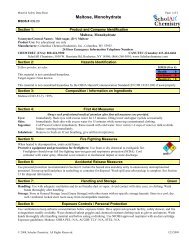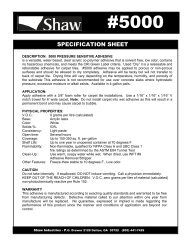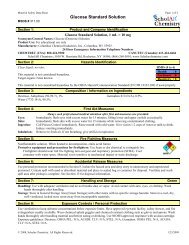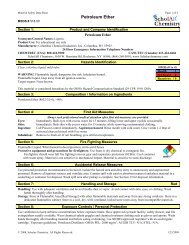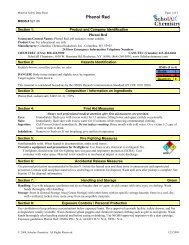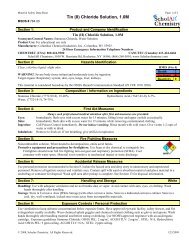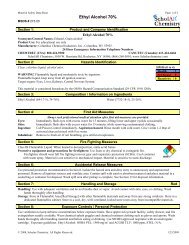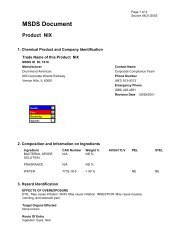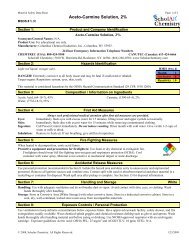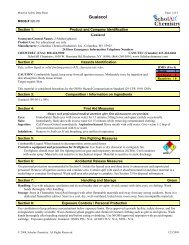Minwax Sanding Sealer.pdf
Minwax Sanding Sealer.pdf
Minwax Sanding Sealer.pdf
Create successful ePaper yourself
Turn your PDF publications into a flip-book with our unique Google optimized e-Paper software.
5600 page 3<br />
Section 7 -- HANDLING AND STORAGE<br />
STORAGE CATEGORY<br />
DOL Storage Class II<br />
PRECAUTIONS TO BE TAKEN IN HANDLING AND STORAGE<br />
Contents are COMBUSTIBLE. Keep away from heat and open flame.<br />
Consult NFPA Code. Use approved Bonding and Grounding procedures.<br />
Keep container closed when not in use. Transfer only to approved<br />
containers with complete and appropriate labeling. Do not take internally.<br />
Keep out of the reach of children.<br />
Section 8 -- EXPOSURE CONTROLS/PERSONAL PROTECTION<br />
PRECAUTIONS TO BE TAKEN IN USE<br />
Use only with adequate ventilation.<br />
Avoid contact with skin and eyes. Avoid breathing vapor and spray mist.<br />
Wash hands after using.<br />
This coating may contain materials classified as nuisance particulates<br />
(listed "as Dust" in Section 2) which may be present at hazardous levels<br />
only during sanding or abrading of the dried film. If no specific dusts<br />
are listed in Section 2, the applicable limits for nuisance dusts are ACGIH<br />
TLV 10 mg/m3 (total dust), 3 mg/m3 (respirable fraction), OSHA PEL 15 mg/m3<br />
(total dust), 5 mg/m3 (respirable fraction).<br />
Removal of old paint by sanding, scraping or other means may generate<br />
dust or fumes that contain lead. Exposure to lead dust or fumes may cause<br />
brain damage or other adverse health effects, especially in children or<br />
pregnant women. Controlling exposure to lead or other hazardous substances<br />
requires the use of proper protective equipment, such as a properly fitted<br />
respirator (NIOSH approved) and proper containment and cleanup. For more<br />
information, call the National Lead Information Center at 1-800-424-LEAD<br />
(in US) or contact your local health authority.<br />
VENTILATION<br />
Local exhaust preferable. General exhaust acceptable if the exposure to<br />
materials in Section 2 is maintained below applicable exposure limits.<br />
Refer to OSHA Standards 1910.94, 1910.107, 1910.108.<br />
RESPIRATORY PROTECTION<br />
If personal exposure cannot be controlled below applicable limits by<br />
ventilation, wear a properly fitted organic vapor/particulate respirator<br />
approved by NIOSH/MSHA for protection against materials in Section 2.<br />
When sanding or abrading the dried film, wear a dust/mist respirator<br />
approved by NIOSH/MSHA for dust which may be generated from this product,<br />
underlying paint, or the abrasive.<br />
PROTECTIVE GLOVES<br />
Wear gloves which are recommended by glove supplier for protection<br />
against materials in Section 2.<br />
EYE PROTECTION<br />
Wear safety spectacles with unperforated sideshields.<br />
OTHER PRECAUTIONS<br />
Intentional misuse by deliberately concentrating and inhaling the<br />
contents can be harmful or fatal.<br />
Continued on page 4



